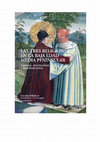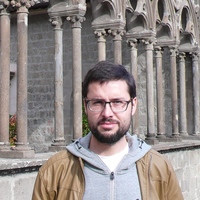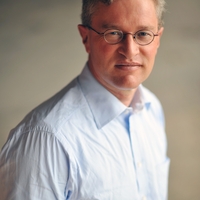BOOKS by Luis Araus Ballesteros

Durante la Baja Edad Media la Península Ibérica posee un gran interés para los investigadores por... more Durante la Baja Edad Media la Península Ibérica posee un gran interés para los investigadores por la presencia de tres religiones -cristianismo, islam y judaísmo-. Este hecho singular en el continente europeo ofrece múltiples vías de estudio como demuestra el gran número de trabajos publicados hasta la fecha. En este trabajo se han analizado las relaciones entre estas tres religiones desde diferentes disciplinas: Historia, Historia del Arte, Filología y Arqueología. El eje vertebrador de la obra es el uso de las religiones como instrumento político, social y económico. Para ello se han agrupado los diversos trabajos en tres partes. En la primera, relativa a los “espacios”, se abordan tanto los viajes de larga distancia, como la creación de barrios separados para las minorías religiosas. La segunda parte, relativa a las “percepciones”, trata las religiones desde las múltiples identidades y su influencia en la comunicación política. En la tercera y última parte se hace hincapié en las “manifestaciones” de diverso género que promovieron cada una de las religiones, bien fuera de carácter material o inmaterial. En conjunto, la obra aporta nuevas visiones acerca de una temática estudiada por diferentes disciplinas y que sigue ofreciendo amplias vías de estudio.
During the Late Middle Ages the existence of three religions -Christianity, Islam and Judaism- in the Iberian Peninsula has a great interest for researches. This was an unique fact in European context, as shows the great number of publications about it. In this book the relations among religious are analyzed from different subjects: History, History of Art, Literature and Archaeology. The main concept is the use of religion as a political, social and economical instrument. The book is divided in three parts. The first one, “spaces” analyze long distance trips and the creation of separate quarters for religious minorities. The second of them is about “perceptions” and talking about identities and political comunication. The third and last part study material and inmaterial manifestations of each religión. As a whole, this book provide new views about this topic, that have been studied from differents disciplines and continue offering wide ways of research.
Papers by Luis Araus Ballesteros
En la España Medieval, 2025
El último siglo de existencia de las comunidades mudéjares es el mejor conocido por los histori... more El último siglo de existencia de las comunidades mudéjares es el mejor conocido por los historiadores gracias la mayor abundancia documental. En este trabajo se revisa el estado actual de cuestiones como distribución espacial, las instituciones, la sociedad, la cultura y la economía de los musulmanes del norte de la Corona de Castilla, señalando sus principales características.
Sarmental. Estudios de Historia del Arte y Patrimonio, 2024
This work presents a first approximation to the virtual reconstruction of a late Roman arca ferra... more This work presents a first approximation to the virtual reconstruction of a late Roman arca ferrata located at the archaeological site of Molino de Arriba (Buniel, Burgos). The poor state of preservation of the metallic remains of this object has led to an extensive discussion of its original appearance and dimensions. The reconstruction has been carried out using 3D modelling software with the aim of generating an explanatory vídeo for the Museum of Burgos about this unique object and, in the future, to integrate it into Virtual Reality interactive experiences
Sarmental. Estudios de Historia del Arte y Patrimonio, 2024
This paper presents the unpublished matrix of the seal of the collegiate church of Santa María de... more This paper presents the unpublished matrix of the seal of the collegiate church of Santa María del Manzano in Castrojeriz, preserved in the Museum of Burgos. It is one of the few medieval Castilian ecclesiastical seal matrices that have survived to the present day. It shows a representa-tion of the seated Virgin, possibly a reproduction of the original main sculpture of the collegiate church.
Mezquitas y cementerios islámicos en la Castilla medieval del Duero, 2021
En este trabajo se tratan los principales espacios rituales de la comunidad mudéjar de la ciudad ... more En este trabajo se tratan los principales espacios rituales de la comunidad mudéjar de la ciudad de Burgos en la Baja Edad Media. Se analizan los datos disponibles sobre las mezquitas, la casa de bodas y los cementerios y se establece su ubicación aproximada. Además de los espacios se aborda la figura del alfaquí, experto en leyes y figura de gran relevancia entre los mudéjares castellanos.
Mudejarismo and Moorish Revival in Europe. Cultural Negotiations and Artistic Translations in the Middle Ages and 19th-century Historicism, 2021
Arte y globalización en el mundo hispánico de los siglos XV al XVII, 2020
At the end of the Middle Ages, Muslims played a relevant role in Castilian urban economy. They wo... more At the end of the Middle Ages, Muslims played a relevant role in Castilian urban economy. They worked very often in crafts related with building. In spite of this, during the 15th century Christian authorities carried out a discourse against Islam that led to the forced baptism of mudejars. The
goal of this paper is to analyse some of the reasons why clients chose mudejar masters instead of Christians working in the same crafts.
Expresiones del poder en la Edad Media. Homenaje al Profesor Juan Antonio Bonachía Hernando, 2019
Circulaciones mudéjares y moriscas. Redes de contacto y representaciones, 2018
Reservados todos los derechos por la legislación en materia de Propiedad Intelectual. Ni la total... more Reservados todos los derechos por la legislación en materia de Propiedad Intelectual. Ni la totalidad ni parte de este libro, incluido el diseño de la cubierta, puede reproducirse, almacenarse o transmitirse en manera alguna por medio ya sea electrónico, químico, óptico, informático, de grabación o de fotocopia, sin permiso previo por escrito de la editorial.
Publications of eHumanista
Publications of eHumanista
Publications of eHumanista
Los textos publicados en el presente volumen han sido evaluados mediante el sistema de pares cieg... more Los textos publicados en el presente volumen han sido evaluados mediante el sistema de pares ciegos. © Los autores © AJHIS © De la presente edición: Los editores I.S.B.N.: 978-84-943493-3-1 Depósito legal: S.174-2015 Maquetación y cubierta: Edita: Hergar ediciones Antema Realiza: Gráficas LOPE C/ Laguna Grande, 2-12 Polígono «El Montalvo II» 37008 Salamanca. España Reservados todos los derechos. Ni la totalidad ni parte de esta publicación pueden reproducirse, registrarse o transmitirse, por un sistema de recuperación de información, en ninguna forma ni por ningún medio, sea electrónico, mecánico, fotoquímico, magnético o electroóptico, por fotocopia, grabación o cualquier otro, sin permiso previo por escrito de los titulares del Copyright.











Uploads
BOOKS by Luis Araus Ballesteros
During the Late Middle Ages the existence of three religions -Christianity, Islam and Judaism- in the Iberian Peninsula has a great interest for researches. This was an unique fact in European context, as shows the great number of publications about it. In this book the relations among religious are analyzed from different subjects: History, History of Art, Literature and Archaeology. The main concept is the use of religion as a political, social and economical instrument. The book is divided in three parts. The first one, “spaces” analyze long distance trips and the creation of separate quarters for religious minorities. The second of them is about “perceptions” and talking about identities and political comunication. The third and last part study material and inmaterial manifestations of each religión. As a whole, this book provide new views about this topic, that have been studied from differents disciplines and continue offering wide ways of research.
Papers by Luis Araus Ballesteros
goal of this paper is to analyse some of the reasons why clients chose mudejar masters instead of Christians working in the same crafts.
During the Late Middle Ages the existence of three religions -Christianity, Islam and Judaism- in the Iberian Peninsula has a great interest for researches. This was an unique fact in European context, as shows the great number of publications about it. In this book the relations among religious are analyzed from different subjects: History, History of Art, Literature and Archaeology. The main concept is the use of religion as a political, social and economical instrument. The book is divided in three parts. The first one, “spaces” analyze long distance trips and the creation of separate quarters for religious minorities. The second of them is about “perceptions” and talking about identities and political comunication. The third and last part study material and inmaterial manifestations of each religión. As a whole, this book provide new views about this topic, that have been studied from differents disciplines and continue offering wide ways of research.
goal of this paper is to analyse some of the reasons why clients chose mudejar masters instead of Christians working in the same crafts.
http://albergueweb.uva.es/islam-medieval-castilla-leon/
http://www.jcyl.es/jcyl/patrimoniocultural/dueromudejar/